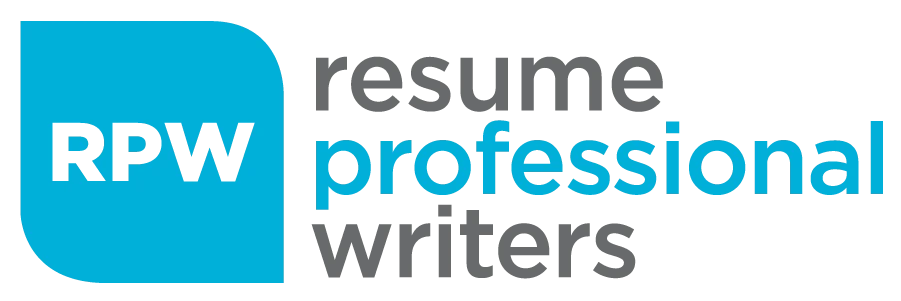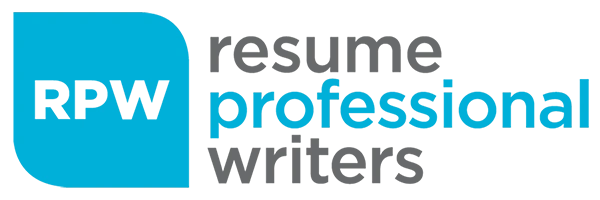In today’s competitive job market, including resume organizations such as professional affiliations, associations, and board memberships greatly enhances your application. These affiliations not only highlight your commitment to your profession but also demonstrate continuous learning and engagement with your industry. Here’s how you can effectively incorporate them into your resume. For those seeking expert assistance, consider exploring our resume writing services to ensure your affiliations are presented in the best possible light.
Understanding Professional Affiliations
What are Professional Affiliations?
Professional affiliations refer to memberships or associations with industry-specific organizations that illustrate a job seeker’s dedication to their profession. These affiliations might include professional associations, memberships, and certifications that are relevant to your job title and industry. By joining these organizations, you signal to potential employers that you are serious about your career and are willing to invest time and resources into your professional development. These affiliations also serve as a testament to your commitment to maintaining high standards within your field.
Importance of Professional Affiliations
Being part just a member of professional affiliations allows you to network with other members, gaining insights into industry trends and best practices. Active participation in professional membership can lead to leadership roles, providing opportunities to develop key skills that are highly valued by career services professionals and hiring managers.
Furthermore, these affiliations often facilitate access to exclusive industry events, publications, and forums where you have the opportunity to engage with thought leaders and experts, broadening your understanding and perspective of the field. Such engagements are instrumental in honing your skills and staying abreast of emerging trends and technologies, ensuring you remain competitive in the job market.
Benefits of Including Professional Associations

Boosting Candidacy
Including professional affiliations on your resume can boost your application by showcasing your expertise, dedication, and engagement with your industry. It also demonstrates your ability to stay current with industry trends and developments. By being an active member of these organizations, you gain access to insider knowledge about professional industry, which then gives you a competitive edge in interviews and job applications.
In addition, employers often view candidates with professional affiliations as individuals who are proactive and committed to their career growth, making them more likely to be considered for roles that require a high level of expertise and dedication. This is particularly valuable in fields such as human resource management, where staying updated with industry standards is crucial.
Enhancing Professional Development
Professional association memberships often offer access to exclusive resources such as webinars, workshops, and conferences, aiding in career development. These affiliations also serve as avenues for community involvement and volunteer work, allowing you to gain relevant experience and quantifiable achievements. Engaging with these resources can help you build a robust skill set, making you a more attractive candidate for advanced positions and promotions. Moreover, volunteer work through these affiliations helps you develop soft skills such as leadership, teamwork, and communication, which are highly valued by employers across various industries.
Selecting Relevant Professional Memberships

Essential Memberships for the Role
When selecting and add professional affiliations and memberships to include on your resume, focus on those essential to your role and industry. Look for organizations that offer certifications or training programs that can further validate your qualifications and enhance your professional credibility. By choosing affiliations and memberships that align with the specific requirements of your desired job description, you effectively convey an utmost preparedness and suitability for the role.
Aligning with Career Goals
Choose affiliations that align with your long-term career goals, ensuring they support your professional journey and aspirations. Engaging with multiple affiliations expands your professional network and opens doors to new opportunities. By aligning your name list professional memberships with your career objectives, you basically position yourself for growth and advancement in your chosen field. This alignment not only showcases your foresight and planning but also underscores your commitment to achieving your career aspirations. Including these affiliations in your resume summary paragraph further highlights your dedication and strategic approach to career development.
Types of Professional Associations
Professional associations can be categorized into various types, each serving a specific purpose and offering unique benefits to their members. Understanding these categories can help you choose the most relevant affiliations to include on your resume.
- Industry-Specific Associations: These associations cater to professionals working within a specific industry, such as healthcare, finance, or technology. They provide industry-specific resources, networking opportunities, and professional development. Examples include the American Medical Association (AMA) and the Financial Planning Association (FPA).
- Professional Societies: These associations focus on promoting a particular profession or occupation, such as engineering, law, or education. They often set professional standards and offer certifications. Examples include the National Society of Professional Engineers (NSPE) and the American Bar Association (ABA).
- Trade Organizations: These associations represent businesses or organizations within a specific industry, advocating for their interests and providing industry-specific resources. Examples include the National Restaurant Association (NRA) and the National Retail Federation (NRF).
- Certification Bodies: These associations offer certifications or licenses to professionals who meet specific standards or requirements, enhancing their credibility and career prospects. Examples include the Project Management Institute (PMI) and the Certified Public Accountant (CPA) certification.
- Networking Organizations: These associations provide opportunities for professionals to connect with others in their industry or profession, facilitating networking and career growth. Examples include the Rotary Club and the Young Professionals Network (YPN).
Examples of Professional Associations by Industry
Here are some examples of professional associations across various industries, highlighting their importance leadership role and relevance:
- Healthcare:
-
- American Medical Association (AMA)
- American Nurses Association (ANA)
- American Hospital Association (AHA)
- Finance:
-
- Financial Planning Association (FPA)
- American Institute of Certified Public Accountants (AICPA)
- National Association of Personal Financial Advisors (NAPFA)
- Technology:
-
- Institute of Electrical and Electronics Engineers (IEEE)
- Association for Computing Machinery (ACM)
- National Association of Software and Services Companies (NASSCOM)
- Education:
-
- National Education Association (NEA)
- American Federation of Teachers (AFT)
- National Association of Elementary School Principals (NAESP)
- Law:
-
- American Bar Association (ABA)
- National Association of Criminal Defense Lawyers (NACDL)
- American Intellectual Property Law Association (AIPLA)
Including memberships in these professional associations list affiliations on your resume demonstrates your commitment to your field and boosts your professional credibility.
Structuring Your Resume to Include Affiliations

Creating a Separate Section
Professional affiliations can be included in a separate section on your resume, such as “Professional Memberships” or “Professional Affiliations.” This separate section should be placed after the work experience section and include relevant details like job title, dates, and achievements. By clearly organizing this information, you make it easier for hiring managers to quickly assess your level of professional involvement and contributions to these organizations.
Remember, a well-structured affiliations section highlights your dedication and active participation, making it easier for potential employers to understand the value you bring to the table.
Highlighting Key Details
Use bullet points to clearly present your roles and contributions within these organizations, making it easy for hiring managers to identify your relevant skills. Including contact details of the most relevant memberships and organizations can add credibility to the affiliations listed. Highlight any leadership roles or special projects you have undertaken, as these put value in your initiative and ability to contribute meaningfully to a professional community. By providing specific examples of your achievements and contributions, you effectively communicate your impact and value to potential employers.
If you have been actively involved in any professional organizations, make sure to emphasize this in your cover letter and resume.
Writing a Strong Professional Organizations Section
What to Include
Include the name of the organization, your role or position within professional organization, and any relevant achievements or contributions. Use bullet points to highlight your skills and experiences related to professional development. Be sure to mention any awards or recognitions you have received in leadership position, as these further underscore your commitment and impact within the organization. Additionally, consider including any special projects or initiatives you have led, as these key in on your ability to take initiative and drive results within a professional setting.
Demonstrating Active Involvement
Highlight active involvement, such as serving on committees or leading projects, to exemplify your commitment to your professional community. This involvement may reflect positively on your ability to contribute effectively in a professional setting. Active participation not only enhances your resume; it also enriches your professional development by providing hands-on experience and leadership opportunities. Additionally, leveraging career services can further support your professional growth and job search efforts.
Common Mistakes to Avoid
Irrelevant or Duplicate Affiliations
Avoid including irrelevant or duplicate affiliations on your resume, as this makes your application appear cluttered and unprofessional. Ensure that your affiliations are up-to-date and accurate. Focus on quality over quantity, selecting affiliations that truly add value to your application and align with the job description. By carefully curating your list professional affiliations, you can present a more polished and focused resume that effectively communicates your qualifications and expertise.
Overloading the Resume
While it’s important to list multiple professional affiliations, be mindful of resume space and avoid overloading it with too many entries. Prioritize the most impactful affiliations to keep the resume concise and focused. A well-organized and streamlined resume can make a stronger impression on hiring managers, highlighting your most relevant qualifications and experiences.
Tailoring Affiliations to Your Audience
Understanding the Job Description
When tailoring your affiliations to your audience, carefully read the job description and requirements. Select affiliations that align with the job requirements and demonstrate your expertise and qualifications. By aligning multiple professional affiliations on your resume with the employer’s needs, you can present yourself as a well-suited candidate for the position. This alignment underscores not only your attention to detail but also your understanding of the role and its requirements. Including relevant affiliations and memberships further highlights your suitability for the job.
Customizing for Specific Industries
Different industries may value certain affiliations more than others; research which organizations are most respected in your field. Including industry-specific organizations enhances the relevance of the affiliations listed. Tailoring your resume to the specific expectations and standards of your industry by including relevant affiliations can help you stand out as a knowledgeable and engaged professional. By understanding the unique needs and priorities of your industry, you’re effectively positioning yourself as a valuable asset to potential employers and job seekers.
Examples and Best Practices

Real-Life Examples of Professional Affiliations on a Resume
Here are some real-life examples of how professional affiliations can be listed on a job seeker or resume for different professions:
- Marketing Professional:
-
- American Marketing Association (AMA)
- Certified Marketing Professional (CMP)
- Member, National Association of Sales Professionals (NASP)
- Software Engineer:
-
- Institute of Electrical and Electronics Engineers (IEEE)
- Certified Software Development Associate (CSDA)
- Member, Association for Computing Machinery (ACM)
- Financial Advisor:
-
- Financial Planning Association (FPA)
- Certified Financial Planner (CFP)
- Member, National Association of Personal Financial Advisors (NAPFA)
These examples illustrate how to effectively list professional affiliations, showcasing your involvement and certifications within your industry.
Tips for Effectively Integrating Professional Affiliations
Here are some tips for effectively integrating professional affiliations into your resume:
- Relevance: Only include professional affiliations that are relevant to the job or industry you are applying to. This ensures that your resume remains focused and impactful.
- Specificity: Be specific about your role or position within the association, such as “Member” or “Certified Professional.” This adds clarity to your level of involvement.
- Dates: Include the dates of your membership or certification to demonstrate your commitment to the profession. This shows potential employers that you are actively engaged in your field.
- Achievements: Highlight any achievements or accomplishments you have made within the association, such as “Awarded the Certified Marketing Professional (CMP) designation.” This underscores your contributions and expertise.
- Consistency: Use a consistent format for listing your professional affiliations throughout your resume. This makes your resume easy to read and professionally presented.
By following these tips, you can effectively showcase your professional affiliations, enhancing your resume and making a strong impression on potential employers.
Resume Organizations: Additional Tips and Considerations
Updating Your Professional Memberships
Regularly update your professional memberships and affiliations to ensure they remain relevant and current. Consider seeking guidance from career services professionals or human resource management experts to ensure your professional affiliations and memberships are effective and impactful. Keeping your affiliations current demonstrates your ongoing commitment to professional development and industry engagement. By staying informed about new opportunities and trends within your field, you can continue to grow and evolve as a professional.
Leveraging Professional Networks
Utilize professional networks to discover new affiliations and stay informed about industry developments. Engaging with peers and mentors can provide valuable feedback on the most beneficial organizations to join. Networking also leads to collaboration opportunities and partnerships that bolster your career prospects. By being actively involved and participating in professional networks, you expand your reach and influence within your industry, opening doors to new opportunities and experiences. This approach is also beneficial for those involved in human resource management, as it helps identify and recruit top talent.
Elevate Your Resume Now!
Including professional affiliations on your resume can effectively demonstrate your expertise, dedication, and engagement with an industry. By strategically listing these affiliations, you stand to have a compelling resume summary that impresses upon hiring managers. A well-crafted affiliations section can be a key aspect of your professional summary, showcasing your commitment to your career and professional growth.
Take the time to carefully select relevant affiliations, structure your resume effectively, and tailor your affiliations to your audience to maximize their impact. Start enhancing your resume today and take a significant step forward in your career journey. By thoughtfully curating and presenting your professional affiliations, you effectively communicate your value and potential to potential employers, setting yourself up for success in your job search and beyond.
For personalized assistance with enhancing your resume and effectively incorporating professional affiliations, reach out to us. Our team of career success professionals is ready to provide expert guidance tailored to your career goals. Whether you need help with structuring your affiliations section or advice on selecting the most impactful memberships, we are here to support you in crafting a compelling resume that stands out to hiring managers. Don’t hesitate to contact us and take the next step in your career journey today!








